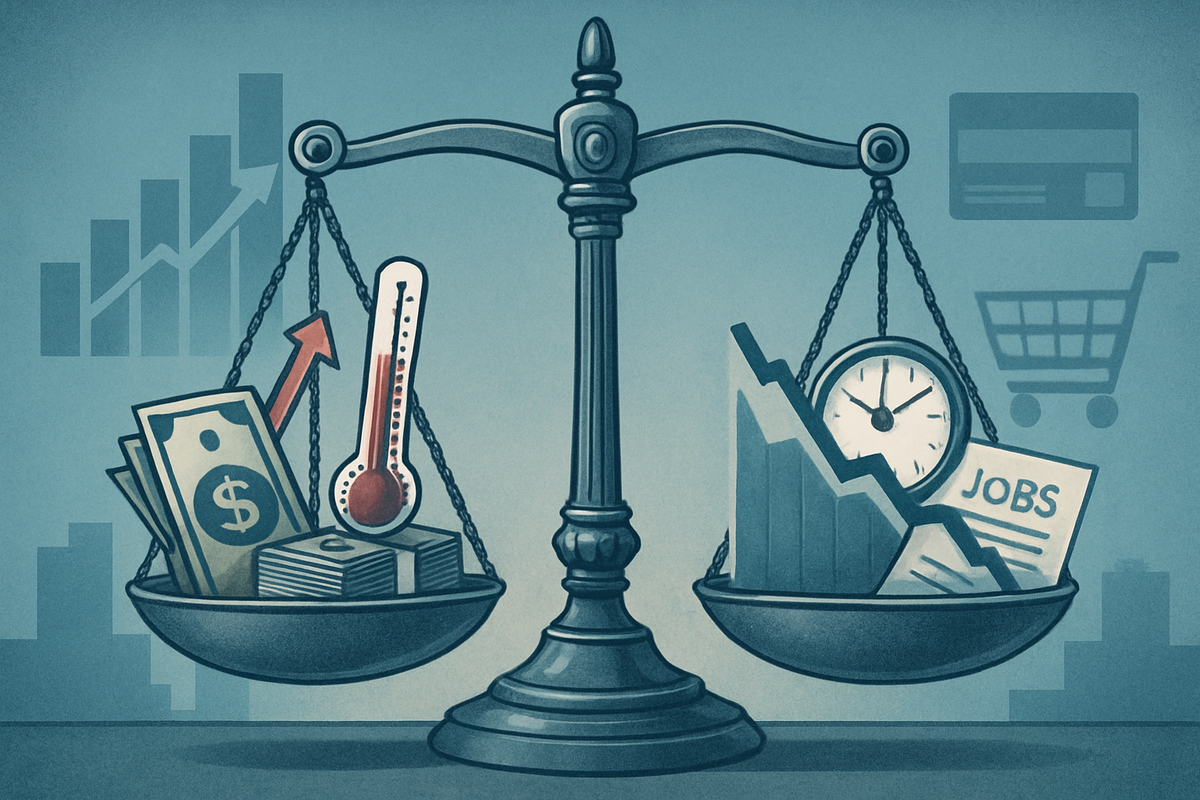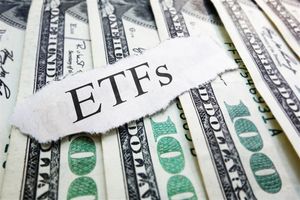
As the Federal Reserve approaches its highly anticipated October 28-29, 2025, Federal Open Market Committee (FOMC) meeting, financial markets are on tenterhooks, meticulously dissecting a complex tapestry of economic indicators. Investors are scrutinizing every data point, from stubborn inflation figures to a visibly softening labor market and mixed signals from consumer spending, all of which will heavily influence the central bank's next move on interest rates. The prevailing sentiment points towards another 25-basis-point rate cut, marking a delicate balancing act for the Fed as it endeavors to manage inflation while bolstering economic stability.
This upcoming decision is critical, coming on the heels of a similar rate reduction in September 2025—the first since December 2024. The Fed's dual mandate of achieving maximum employment and price stability is being tested by conflicting economic signals, forcing a strategic shift towards a "risk management" approach. This involves proactively easing monetary policy to cushion the economy against a potential downturn, even as inflation rates continue to hover above the Fed's long-term 2% target. The market's expectation of further cuts underscores a collective belief that the central bank is prioritizing economic growth and employment amid evolving challenges.
The Economic Barometer: A Closer Look at Key Indicators
The Federal Reserve's policy decisions are fundamentally data-driven, with several key economic indicators serving as the primary compass. As of October 2025, these indicators paint a nuanced picture, guiding the Fed's path forward.
Inflation Rates: Persistent Pressure with Glimmers of Moderation Inflation remains a central concern, persistently exceeding the Fed's 2% target. The Consumer Price Index (CPI) for All Urban Consumers increased 3.0% year-over-year in September 2025, a slight uptick from August's 2.9%. Monthly, CPI rose 0.3%, primarily driven by a 4.1% surge in gasoline prices. The "core" CPI, which strips out volatile food and energy components, showed a 3.0% annual increase in September, a minor deceleration from 3.1% in the preceding two months. Meanwhile, the Fed's preferred gauge, the Personal Consumption Expenditures (PCE) Price Index, indicated an annual headline inflation rate of 2.7% for August 2025, with core PCE remaining at 2.9% year-over-year. While these figures are still above target, the slight moderation in monthly core CPI provides some room for the Fed to consider easing.
Employment Figures: A Softening Labor Market The labor market, a cornerstone of economic health, is showing clear signs of cooling. The U.S. unemployment rate stood at 4.3% in August 2025, unchanged from September 2025 estimates and representing the highest level since October 2021. The broader U-6 unemployment rate also rose to 8.1% in August, indicating a consistent increase throughout 2025. Non-farm payroll employment increased by a modest 22,000 jobs in August 2025, significantly missing expectations and falling below the trailing 12-month average. ADP reported that private employers shed 32,000 jobs in September, further signaling a weakening trend. This slowdown in job creation and rising unemployment are compelling reasons for the Fed to adopt a more accommodative stance to stimulate economic activity.
GDP Growth: Resilience with Anticipated Deceleration Gross Domestic Product (GDP) growth, an overall measure of economic output, demonstrated surprising resilience in the second quarter of 2025, expanding at a robust 3.8% annualized rate (third estimate). This upward revision, driven by strong household spending and business investment, marked the fastest pace since late 2023. However, forecasts for the third quarter of 2025 suggest a moderation, with the Atlanta Fed's GDPNow model projecting 3.9% growth, while other surveys anticipate a more modest increase around 1.6% to 1.3%. While Q2's strength indicates a resilient economy, the anticipated deceleration underscores the Fed's need to prevent a sharper slowdown.
Consumer Spending: Mixed Signals Consumer spending, a vital component of GDP, presents a mixed picture. Personal consumption expenditures (PCE) increased by 0.6% in August 2025, and Q2 saw robust annualized growth of 2.5%. However, more recent data for September indicates a slowdown, with total retail sales (excluding automobiles and gasoline) down 0.66% month-over-month. Core retail sales also decreased by 0.49% monthly. Despite strong year-over-year growth, the recent monthly softness suggests that while consumers have been resilient, higher interest rates and other headwinds may be starting to temper demand, reinforcing the Fed's inclination towards easing.
Potential Winners and Losers in a Looser Monetary Environment
A Federal Reserve rate cut, especially if followed by a series of reductions, sends ripple effects across financial markets, creating distinct winners and losers among public companies.
Potential Winners: Sectors highly sensitive to interest rates are poised to benefit significantly. The housing market, for instance, could see a resurgence. Homebuilders like D.R. Horton (NYSE: DHI) and Lennar Corporation (NYSE: LEN), along with mortgage lenders such as Wells Fargo (NYSE: WFC) and JPMorgan Chase & Co. (NYSE: JPM) (despite potential NIM pressure, mortgage origination could pick up), would likely experience increased demand as borrowing costs for consumers and businesses decrease. Technology companies (NASDAQ: QQQ), particularly growth stocks that rely on future earnings potential, often thrive in lower-rate environments as their discounted future cash flows become more valuable. Companies like Microsoft (NASDAQ: MSFT), Apple (NASDAQ: AAPL), and emerging tech firms could see renewed investor interest. Highly leveraged companies across various sectors, which have significant debt, would also benefit from lower interest payments, improving their profitability. This could include sectors like utilities (NYSE: XLU) and telecommunications (NYSE: XLC). Furthermore, consumer discretionary companies (NYSE: XLY) could see a boost as lower borrowing costs for consumers might free up more disposable income, encouraging spending on non-essential goods and services.
Potential Losers: Conversely, some sectors might face headwinds. Banks (NYSE: KBE) and other financial institutions could see their net interest margins (NIMs) squeezed as the spread between what they earn on loans and what they pay on deposits narrows. While increased loan demand might partially offset this, a prolonged period of lower rates can pressure profitability. Sectors that tend to perform well in higher-rate environments, such as certain value stocks or those that offer attractive dividends when bond yields are high, might become less appealing to investors seeking yield. Companies with strong balance sheets and minimal debt, while always financially sound, might not experience the same relative boost in profitability as their more leveraged counterparts who see significant reductions in interest expenses. However, their stability generally makes them resilient regardless of rate movements.
Wider Significance: Navigating the Economic Landscape
The Federal Reserve's anticipated rate cuts, driven by a weakening labor market and moderating inflation, signal a significant pivot in monetary policy. This shift is part of a broader trend where central banks globally are increasingly moving towards accommodative stances to avert economic downturns.
This event fits into the ongoing narrative of whether the U.S. economy can achieve a "soft landing"—where inflation cools without triggering a recession—or if the cumulative effects of past tightening will eventually lead to a more severe contraction. The Fed's proactive cuts suggest a strong inclination to engineer a soft landing, prioritizing employment stability. The ripple effects extend beyond domestic borders. A weaker dollar, a potential consequence of lower U.S. interest rates, could make American exports more competitive, benefiting multinational corporations like Coca-Cola (NYSE: KO) and Procter & Gamble (NYSE: PG). Conversely, it could make imports more expensive. Emerging markets might also experience capital inflows as investors seek higher yields outside the U.S. Historically, periods of Fed easing have often followed signs of economic stress or significant market volatility. Comparisons can be drawn to easing cycles in the early 2000s or post-2008 financial crisis, where the Fed stepped in to stimulate growth. However, the current environment is unique, characterized by persistent inflation alongside a softening labor market, making the Fed's balancing act particularly challenging. Regulatory bodies will be closely watching for any signs of excessive risk-taking in financial markets as liquidity increases, potentially leading to new policy discussions around financial stability.
What Comes Next: A Path Forward
The path ahead for the U.S. economy and financial markets hinges critically on the Federal Reserve's subsequent actions and the evolving economic data.
In the short-term, another 25-basis-point rate cut at the October FOMC meeting is widely expected, with market participants already pricing in further cuts in December 2025. This trajectory points to a sustained period of lower borrowing costs, which could provide a much-needed stimulus to interest-rate sensitive sectors and consumer spending. However, the speed and magnitude of future cuts will depend heavily on whether inflation continues its downward trend and if the labor market stabilizes or deteriorates further. Long-term possibilities include a gradual return to the Fed's 2% inflation target, coupled with a robust and stable labor market, leading to a prolonged period of moderate economic growth. Alternatively, if inflation proves stickier than anticipated, or if the rate cuts fail to sufficiently stimulate the economy, the Fed might face difficult choices, potentially requiring a pause or even a reversal of its easing policy. Strategic pivots for businesses may involve re-evaluating capital expenditure plans, debt refinancing strategies, and pricing models in anticipation of lower interest rates. Companies that have been conservative due to high borrowing costs might now find opportunities for expansion or mergers and acquisitions. Market opportunities could emerge in sectors that benefit from lower rates, such as growth stocks, real estate, and companies with significant debt. Conversely, challenges might arise for financial institutions reliant on wide net interest margins, and for investors seeking high-yield fixed-income assets. Potential scenarios range from a successful soft landing, where economic growth continues moderately, to a mild recession if the easing proves insufficient or comes too late.
Comprehensive Wrap-up: Navigating Uncertainty
The Federal Reserve stands at a critical juncture, tasked with steering the U.S. economy through a period of conflicting signals. The anticipation of another interest rate cut underscores the central bank's commitment to supporting employment and mitigating economic risks, even as inflation remains a persistent concern.
Key takeaways from the current economic landscape include the delicate balance the Fed is attempting to strike, the clear signs of a softening labor market, and the mixed yet resilient picture painted by GDP and consumer spending. The Fed's "risk management" approach, prioritizing proactive easing, is a defining characteristic of its current strategy. Moving forward, the market will remain highly sensitive to incoming economic data. Any significant shifts in inflation trends, employment figures, or consumer behavior could prompt the Fed to adjust its trajectory. Investors should prepare for continued volatility and be agile in their portfolio management. Final thoughts on the significance and lasting impact suggest that this period of monetary easing could lay the groundwork for a more stable economic environment, but it also carries the risk of reigniting inflationary pressures if not managed carefully. The Fed's decisions in the coming months will be instrumental in shaping the economic narrative for the foreseeable future. What investors should watch for in coming months includes the monthly CPI and PCE inflation reports, non-farm payrolls and unemployment rate figures, and the Fed's own forward guidance and dot plot projections. Monitoring corporate earnings, particularly from interest-rate sensitive sectors, will also provide valuable insights into the real-world impact of monetary policy.
This content is intended for informational purposes only and is not financial advice






